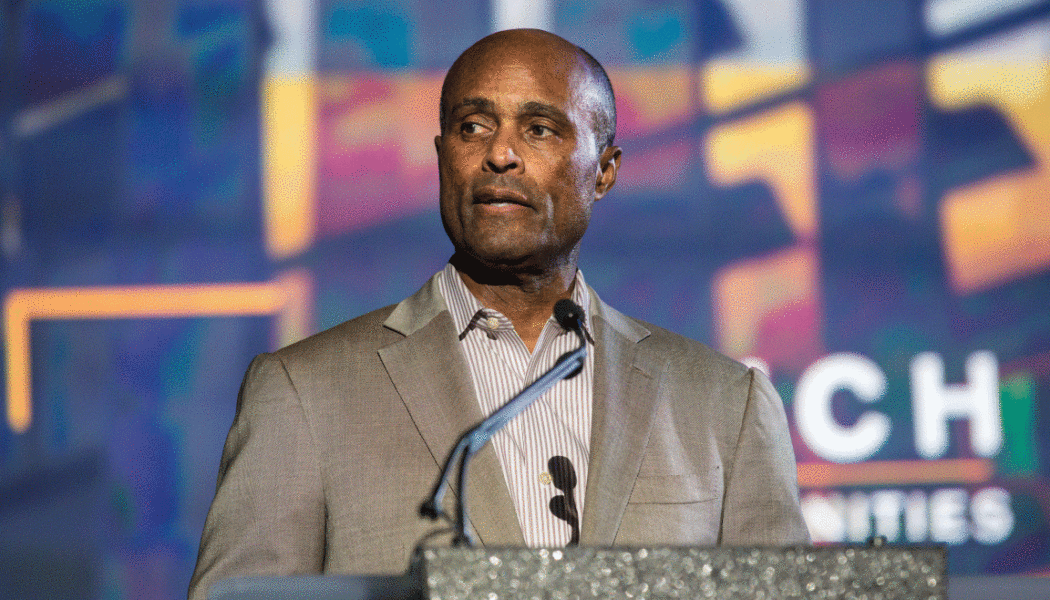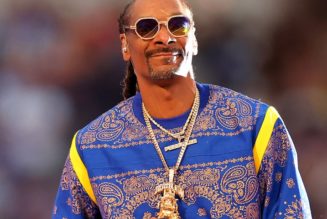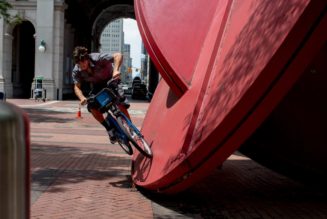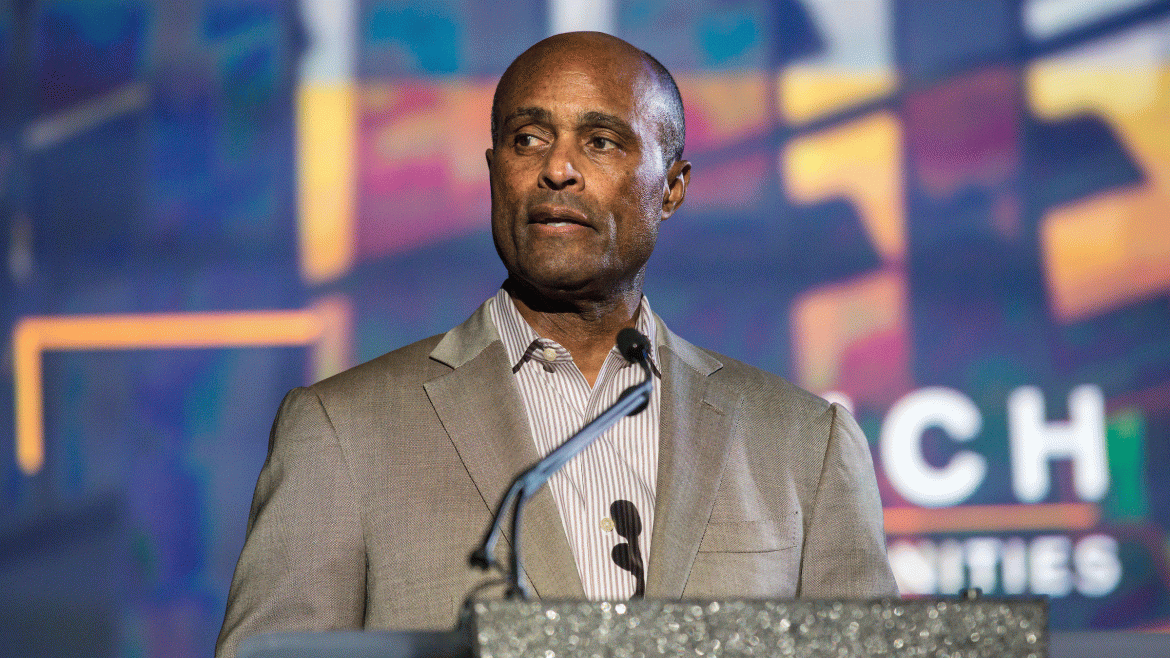
He will remain at university to expand sports law and business program
Ray Anderson announced Monday that he has resigned as Arizona State University’s vice president for university athletics and athletic director, effective immediately.
Anderson, 69, said it simply is the right time for the move. He will remain at ASU as a professor of practice and senior advisor to help expand the well-respected sports law and business program in the Sandra Day O’Connor College of Law.
“It has been a privilege to serve as ASU’s athletic director for nearly a decade,” he said. “We have entered an unprecedented era where the number and magnitude of changes in the college sports landscape are astounding. As I approach 70, these are not matters that my leadership would be able to corral during my tenure. Continuity of leadership will be needed, and I am choosing to step aside to let the university find that leader.”
Jim Rund, ASU senior vice president for Educational Outreach and Student Services, will serve as interim athletic director. Rund served as the interim athletic director in 2013 following the departure of Steve Patterson to the University of Texas.
The next athletic director will help navigate ASU’s upcoming move into the Big 12 conference and other landscape-shifting issues including name, image and likeness (NIL) licensing; the transfer portal; and recent Title IX challenges.
Anderson was named athletic director in January 2014. He quickly made his mark by focusing on academic success; Olympic sports, along with football and basketball; fundraising; and the need to expand and refresh ASU’s athletic facilities.
Anderson led Sun Devil Athletics through important changes including reaching one of the largest naming-rights deals in college sports history for Sun Devil Stadium to become Mountain America Stadium. He also was instrumental in the university’s decision to soon leave the Pac-12 conference and enter the Big 12 conference.
Anderson hired numerous national coaches of the year, Pac-12 coaches of the year and national championship winners, and he led ASU to a top-20 finish in the Learfield Directors’ Cup. He was a finalist for the Sports Business Journal’s Athletic Director of the Year in 2019 and was named by Forbes as one of the 25 Most Influential Minorities in Sports in 2016 for helping “position the Sun Devils as one of the most innovative brands in college sports.”
“I want to sincerely thank the many ASU student-athletes as well as our dedicated coaches and staff for the pleasure of leading them as their athletic director,” Anderson said. “They have all been wonderful partners and teammates.”
ASU President Michael Crow said, “By prioritizing student success, raising unprecedented levels of resources and evolving the Sun Devil brand, Ray Anderson has been one of the most impactful and longest-serving athletic directors in the history of Arizona State. We respect his decision, and we appreciate his service to the university.”
Expanding varsity sports
Anderson helped ASU expand to 26 varsity sports. In 2016, Sun Devil Athletics reinstated the men’s tennis program at ASU — made possible through a $1 million gift from Anderson and his wife, Buffie.
In 2014, Anderson announced the addition of the men’s ice hockey program, which was made possible through a record-setting $32 million donation, at the time the largest in Sun Devil Athletics history. The gift also provided mechanisms to fund the addition of both women’s lacrosse and women’s triathlon, which were announced in the fall of 2015.
Anderson led an athletics facilities renaissance that included:
- The final phase of the $307 million reinvention of Mountain America Stadium.
- The design and construction of a new $134 million multipurpose arena (Mullett Arena) that opened in October 2022 to house hockey and volleyball.
- A new beach volleyball facility.
- The Novus Innovation Corridor, with 330 acres of ASU-owned land leased long term to developers, with Sun Devil Athletics then receiving annual assessment payments.
- The baseball program’s celebrated move into Phoenix Municipal Stadium and capital improvements including an indoor batting facility and pitching lab.
- The men’s and women’s golf programs moving into their new home and state-of-the-art facility, The Thunderbird, at Papago Golf Course.
- ASU hockey becoming a member of the prestigious National Collegiate Hockey Conference in 2024. The conference produced five of the last six men’s Division I national champions.
A stable of strong programs
ASU will enter the Big 12 as a leader on several fronts, as its 26 sports, 650-plus student-athletes and nearly 150 Academic All-Americans all will be at the top of Big 12 charts. ASU also will enter the Big 12 as a member of the AAU, a prestigious collection of the top research universities. ASU will host the Men’s Final Four in 2024, then host the Women’s Final Four in 2026 in Phoenix as a Big 12 member while also leading the initiative to add both beach volleyball and lacrosse to the Big 12 championship calendar.
Though the football team struggled through an injury-plagued season, nine ASU teams were ranked in the national top 25 including hockey, volleyball, men’s golf, women’s golf, wrestling, men’s swimming, women’s swimming, soccer and triathlon.
Anderson tapped into U.S. national teams when selecting coaches, including hiring:
- USA Swimming Coach Bob Bowman to lead the men’s and women’s swimming program. The men won the Pac-12 title for the first time in spring 2023 and posted its best NCAA Championship finish (second place).
- Zeke Jones, USA Wrestling’s national freestyle coach, to take over the ASU wrestling program, leading to five Pac-12 wrestling titles (2017, 2018, 2020, 2021 and 2022) and a fourth-place NCAA trophy in 2021.
- Cliff English, USA Triathlon’s elite national team coach, joined ASU to lead the first Power Five women’s triathlon program, which captured six straight Women’s Collegiate Triathlon National Championships from 2016–19 and 2021–22 — and just won its seventh national championship in 2023.
Anderson also hired Bobby Hurley, one of the most decorated college basketball players in history, to coach men’s basketball. He took ASU to a No. 3 ranking in December 2017, its highest since the early 1960s, as well as numerous trips to the NCAA men’s basketball tournament. And Willie Bloomquist, a Sun Devil Athletics Hall of Famer, former Pac-12 Player of the Year and 14-year Major League Baseball player, joined ASU to revitalize the baseball program. Bloomquist is one of eight ASU alumni now coaching varsity sports at the university.
Prioritizing academics
Dedication to the classroom was a hallmark of Anderson’s tenure. In 2023, ASU recorded the highest Academic Progress Rate in the Pac-12 for the second year in a row, beating Stanford and Cal. The mark also tied the all-time ASU high.
Sun Devil Athletics in December 2021 also reached an all-time high Graduation Success Rate, with a record 10 programs reaching 100%. In each of Anderson’s years at the helm, Sun Devil Athletics surpassed its previous all-time best GSR.
In his new role with the Sandra Day O’Connor College of Law, Anderson will utilize his lifetime of sports-related business, legal and academic experiences, as well as his Stanford and Harvard Law School degrees.
A Los Angeles native, Anderson earned a Bachelor of Arts in political science from Stanford in 1976 and a Juris Doctorate from Harvard Law School in 1979. He was an all-league high school quarterback and shortstop, and he was a three-year football letterman and two-year baseball letterman at Stanford.
Anderson co-founded the sports law practice at Heller, Ehrman, a prominent San Francisco firm, in 1980, and entered the sports agency business in 1984 when he opened the West Coast office for Sports Advisors Group. In 1987, he launched his own agency, AR Sports, specializing in the representation of NFL coaches and players and later adding Major League Baseball players.
“Buffie and I want to give our heartfelt thanks to President Crow and the Arizona Board of Regents for giving me the opportunity to serve as a leader primarily focused on the athletics side of this New American University,” Anderson said. “Now, I look forward to continuing to serve ASU with my focus on the academic side.”
Top photo: Vice President for University Athletics and Athletics Director Ray Anderson (shown at a January 2017 event at Chase Field in Phoenix) announced Monday that he has resigned as ASU vice president for university athletics and athletic director. He will remain at ASU as a professor of practice and senior advisor to help expand the sports law and business program in the Sandra Day O’Connor College of Law. Photo by Charlie Leight/ASU News
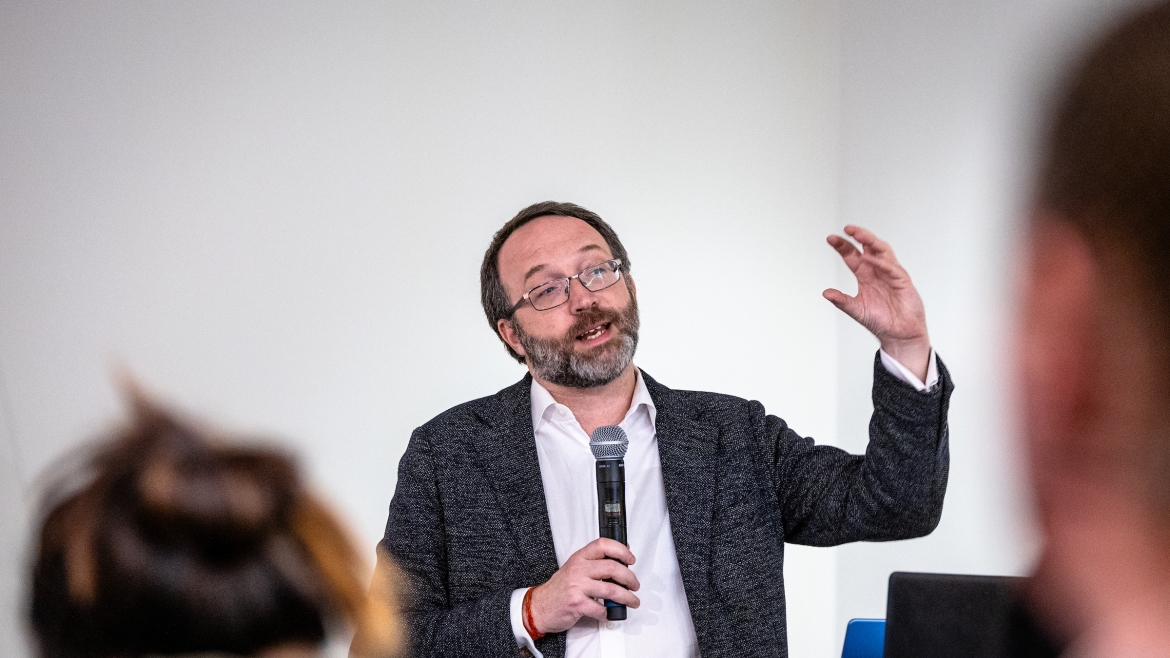
ASU Interplanetary Initiative holds Space Economy Camp for Writers
Stories about a future in which people live and work among the stars can be speculative fiction, but one NASA official sees a straight line from storytelling to real life.
Alexander MacDonald, chief economist for NASA, addressed a group of writers at the first-ever Space Economy Camp for Writers, sponsored by the Interplanetary Initiative at Arizona State University.
The purpose of the three-day camp was to support the 20 established writers as they imagine space worlds with new economic models.
“This is why you all are so important not just to space flight but to imagining in general,” MacDonald told the group.
“We don’t go to space because we have the machines. We go to space because we have a culture of people who are inspired to build the machines.
“The narratives create the future.”
MacDonald said that one of the first known stories of space flight was in the 16th century, when it was speculated that people could harness flying geese to ride to the moon.
Edgar Allan Poe wrote a story about a bell-maker who uses his knowledge on how to condense air to keep himself alive on the way to the moon.
“That was the first spacecraft components list in history, and his character gets to the moon,” MacDonald said.
Poe inspired Jules Verne, who wrote “From the Earth to the Moon,” a novel that was set in Baltimore as an ode to Poe. Konstantin Tsiolkovsky, a Russian and rocket scientist, was inspired by Verne and theorized the science of spaceflight in the 19th century.
MacDonald said that Robert Goddard, an American engineer and physicist who invented the first liquid-propelled rocket, was inspired by “The War of the Worlds” by H.G. Wells.
“He decided to devote his life to spacecraft. It’s a direct continuity from the goose machines,” he said.
“We told stories for hundreds of years of people building machines to go the moon and then we did it.”
MacDonald told the writers that to create a realistic speculation of space economics, it can help to look to the past.
For example, the concept of raising private money for space flight rather than relying on government funding goes back to Goddard, who received donations from the Guggenheim family.
MacDonald showed a photo of President Lyndon Johnson watching a rocket launch in the 1960s.
“One of the most important documents to think about in terms of the non-exploitation of space is the Outer Space Treaty,” signed by the 114 countries, including the U.S., Russia and China, he said.
“It essentially commits the nations of the world to not appropriate the moon or any of the celestial bodies,” he said.
“To this day, the Outer Space Treaty is the principle treaty of international accord in space. If that’s not a radical act, I don’t know what is.”
MacDonald told the writers that he doesn’t see a commercial payoff any time soon in moon rocks or space tourism.
“There are no runaway commercial markets,” he said. “It will be a much longer process.”
The writers also heard from author and camp facilitator Mary Robinette Kowal, who described methods of world building. She explained the importance of thinking out different aspects of life in space.
“World building is research that you make up, so the same rules apply as to historical fictions,” she said.
“Work in layers. Come up with broad general strokes to develop and idea then refine areas you’ll dig into.”
Koval told the writers that they’ll hit a point at which they have to determine whether a certain technology exists.
“Bracket it and come back later. Either the technology exists or it doesn’t and you’ve identified a component that people will need to invent.”
The writers were divided into groups to create worlds based on different locales: Mars, a low earth orbit space station, the moon and an asteroid belt.
Koval gave a long list of questions to consider.
“How will you compensate for different day-night cycles from Earth?” she said.
“Why are they deciding to live in space? That will affect the culture.”
The ASU Interplanetary Initiative is a transdisciplinary project to imagine a sustainable future in space. This year, the initiative is investigating the current and near-future state of the space economy and space property rights.
The Space Economy Camp was led by Joffa Applegate, assistant research professor in the School of Complex Adaptive Systems, the Biosocial Complexity Initiative, the Center for Behavior, Institutions and the Environment and the Center for Social Dynamics and Complexity.
Other partners in the event were The Breakthrough Initiatives, 100 Year Starship and Space Prize, an initiative that works for gender equity in space.
Top image: Alexander MacDonald, chief economist for NASA, gave a talk to participants at the ASU Space Economy Camp for Writers titled “The Narrative Origins and Future of Spaceflight” on Thursday, Nov. 9, at Skysong, the ASU Scottsdale Innovation Center. Photo by Charlie Leight/ASU News

Services Marketplace – Listings, Bookings & Reviews
